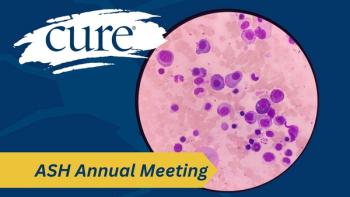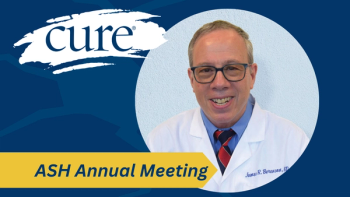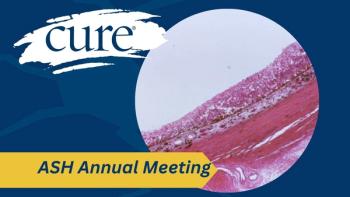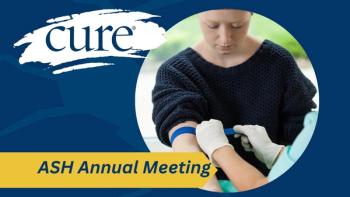
Prostate Cancer Loves Couch Potatoes
In order to turn your prostate cancer into a couch potato and keep it from spreading, your best chance is not to be one yourself.
Your prostate doesn’t care so much about the size of your muscles — it turns out that how “ripped” or “shredded” you are is not nearly as important as your cardiovascular health.
What the Latest Science Tells Us About Prostate Cancer
Why should your prostate be so interested in your heart? What’s the connection? Here it is: Cardiovascular exercise can lower your risk of getting lethal prostate cancer and of having cancer come back if it’s already been treated.June M. Chan, Sc.D., a Prostate Cancer Foundation (PCF)-funded epidemiologist and world-renowned expert on lifestyle and cancer, heads a research program at the University of California San Francisco that aims to uncover fixable risk factors for prostate cancer progression — elements of your lifestyle that you can change to lower your odds of dying from prostate cancer.
In previous work, Chan and colleagues were the first to show that vigorous exercise (like jogging or bicycling) after diagnosis was associated with a reduced risk of prostate cancer death in men with localized disease. “We observed that three or more hours a week of vigorous activity, as opposed to less than one hour a week, was associated with an approximately 60% reduction in the risk of dying of prostate cancer,” Chan said.
The research team observed similar results among 1,455 men in the Cancer of the Prostate Strategic Urologic Research Endeavor (CaPSURE). These findings suggested that “engaging in relatively vigorous physical activity and/or having higher cardiorespiratory fitness may protect against prostate cancer progression.”
Why is this? That’s what Chan and colleagues hope to find out. “We have a number of studies here at UCSF examining lifestyle and prostate cancer,” Chan explained. “One trial is for men on Active Surveillance, and our main goal is to look at changes in prostate tissue.”
Investigators are comparing prostate biopsy samples taken at diagnosis and again after a 16-week period in which men are randomly assigned either to continue their usual activities or to take part in a personalized exercise program that is designed to increase their cardiopulmonary fitness. The researchers also measure chemical processes involving circulation and metabolism, looking for specific differences between the two groups.
Chan is not as interested in studying men who are already exercising frequently. “We anticipated that the biggest benefits would be observed in individuals who are relatively sedentary and who adopt moderate exercise. If men are already highly fit, they’re probably already exercising several hours a week, and we thought it would be harder to ask them to do more or spend more time so that we could observe a relative change in fitness,” she said. “Our main goal is to increase fitness levels gradually through a walking program in men who are at low to intermediate levels of fitness at the beginning of the study.”
The hypothesis is that even moderate exercise—the kind that mostly everyone can do—can help lower the risk of lethal prostate cancer. It is “purposely scaled to be relative to someone’s baseline fitness, and we are choosing men who are low-to moderate-fit,” Chan noted.
Men in the study begin by walking, and then walking faster, and then escalating to walking uphill. “Technically, the definitions of low, moderate, and vigorous correspond to actual heart rate cutoffs that we apply, using baseline data collected through a cardiopulmonary exercise test, where we take them to their ‘max’ under supervised conditions.” This allows the researchers to custom-tailor heart rate goals that correspond to working out at a certain percentage of their max capacity.
Men who participate in the study aren’t going flat-out, like someone in a high-intensity workout — they’re just doing a little more than they could at baseline. After they get used to that, they do a little bit more, continuing the process of slowly building up their fitness abilities.
Making Prostate Cancer Fat and Happy
Chan speculates that the tissue samples in the exercise group will show changes in indicators of angiogenesis (cancer’s ability to build a scaffolding of blood vessels and other infrastructure so it can grow and move beyond the prostate); in inflammatory processes; in insulin and insulin-like growth factor signaling; in androgen receptor signaling pathways; and in oxidative stress mechanisms. “Biochemically, exercise could help deter metastasis of the tumor by changing the environment for the cancer,” Chan said, in effect, curbing tumor growth.“Prostate cancer may be the most common cancer where exercise, used like a drug, can confer an increase in survival,” said medical oncologist Jonathan Simons, M.D., CEO of the PCF. “There is no form of treatment that has this effect, and certainly not one as beneficial to the entire body as exercise.”
It may be, that just as it improves blood flow in the arteries, it also gives cancer a better blood supply that keeps it happy where it is, “so the tumor has no motivation to leave,” Simons said. Exercise makes cancer feel like it’s at a nice hotel, with free cable TV, continental breakfast and a pool. It’s content to stay there indefinitely, ordering room service. “When tumors are stressed, they have genes that are programmed to help them survive by getting them to crawl away to someplace that better serves their needs,” he explained.
In research at Johns Hopkins, Simons found that one of those genes not only pipes in more blood to supply the tumor; it gets rid of waste products — the cancer cells’ sewage, in effect. “When tumors try to turn on blood vessel growth to get more nutrients, they also build their own plumbing for both intake and waste disposal. Angiogenesis is not just about getting oxygen and food (glucose and protein) to the cancer. It’s getting rid of byproducts, too. That kicks off a genetic program so the cancers can relocate,” or start to spread.
Giving the cancer better blood flow might subvert the cancer’s need to boost its own blood supply. It just may be that exercise makes cancer sit back in the recliner and reach for the remote, rather than reach for the door and look for a better place to live. A strange notion, isn’t it, that in order to turn your prostate cancer into a couch potato, your best chance is not to be one yourself?
This doesn’t mean, of course, that men who exercise are immune to prostate cancer. “There are very fit athletes who have had forms of prostate cancer that are so aggressive, so genetically mutated, that have proved fatal,” Simons noted. However, those men are at one end of the spectrum of prostate cancer. There are many thousands of men at the other end or in the middle, for whom exercise may make a real difference.
When Is It Too Late To Start Exercising? Never!
“What if you have a Gleason 8 cancer, you had surgery, your PSA was undetectable, and now it’s starting to creep up? And what if you could exercise and delay its colonizing in your bones by eight or nine years, because you so shifted the chemistry in your body that the cancer cells just sat there? That’s a very abstract concept, one that’s still not widely appreciated. But if we could get even three times as many men right now exercising, we could change the overall survival of the disease,” Simons said. And if scientists like Chan can figure out precisely why this is happening, it may lead to development of new treatments that could make exercise even more effective in deterring the return or spread of prostate cancer.In other trials, including one funded by Movember, Chan and colleagues from around the globe are studying the benefit of aerobic exercise and also strength training in men with castrate-resistant prostate cancer, to see if these interventions can help men at a later stage of cancer live longer. “There are data in men with advanced disease also suggesting that exercise may impart not only quality of life but also clinical benefits” she said.
Chan also hopes to make exercise a more attainable goal for all men with prostate cancer by providing enough data “that exercise programs, a personal trainer, and activity-tracking devices (such as Fitbit) might be covered by insurance.” She and her team, including PCF Young Investigator Stacey Kenfield, Sc.D., are examining several technology-enhanced lifestyle interventions, including a website, Fitbit, and text messaging, to see if they can help men with prostate cancer “eat better, move more, and deter their cancer’s spread.”
For more on prostate cancer prevention, visit
Janet Farrar Worthington is an award-winning science writer and has written and edited numerous health publications and contributed to several other medical books. In addition to writing on medicine, Janet also writes about her family, her former life on a farm in Virginia, her desire to own more chickens, and whichever dog is eyeing the dinner dish.





